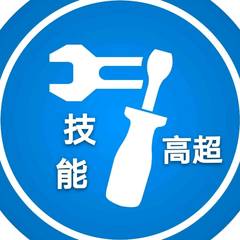热门推荐
 什么龟什么鼈的词语有哪些
什么龟什么鼈的词语有哪些
 什么龟什么酒的词语有哪些
什么龟什么酒的词语有哪些
 什么龟什么药的词语有哪些
什么龟什么药的词语有哪些
 什么龟什么腋的词语有哪些
什么龟什么腋的词语有哪些
 什么龟什么肠的词语有哪些
什么龟什么肠的词语有哪些
 什么龟什么紫的词语有哪些
什么龟什么紫的词语有哪些
 什么龟什么策的词语有哪些
什么龟什么策的词语有哪些
 什么龟什么木的词语有哪些
什么龟什么木的词语有哪些
ug后处理刀具列表定制命令怎么写
问题描述
- 精选答案
-

UG后处理刀具列表定制命令可以通过编写UG NX的自定义宏来实现。
具体步骤如下:
1. 打开UG NX软件,在菜单栏中点击“工具”->“操作工具栏”->“程序”->“宏实用程序”。
2. 在弹出的窗口中,点击“新建宏”,输入宏的名称并点击“确定”按钮。
3. 在宏编辑页面中,输入以下命令:# See if there is already an operation in the program...Dim nProgram As Program '检查是否已经有加工程序Set nProgram = GetNxCurrentProgramIf Not nProgram Is Nothing Then...Dim nView As View '选择要显示的操作列表Set nView = UI.SelectionManager.SelectTaggedObject("Select a view")If Not nView Is Nothing Then...Dim nCB As CuttingBody '循环遍历所有刀具For Each nCB In nOp.CuttingToolInfos.CuttingBodiesDim strName As String '获取刀具名称strName = nCB.CuttingTool.TwistDrill.ToolName...Dim nRow As Listbox.Row '将名称添加到列表中Set nRow = nList.AddRownRow.SetColumnDisplayData 0, strNameNextMsgBox "Done."ElseMsgBox "No View Selected."End IfElseMsgBox "No program open."End If4. 将编写好的自定义宏保存,然后将其导入到UG NX软件中。此时,在菜单栏中应该就可以看到新添加的自定义宏了。
5. 在操作工具栏中点击新添加的自定义宏,即可打开刀具列表定制窗口,并运行自定义的命令。
- 其他回答
-
UG后处理中的刀具列表可以通过定制命令来实现自定义,具体步骤如下:
1. 打开UG程序,进入刀具库管理界面。
2. 选择“后处理选项(H)”,然后单击“编辑后处理数据…”,进入后处理编辑器界面。
3. 在后处理编辑器界面中,选择“工艺(G)”——“Add on commands(A)”——“Cutter path list”依次打开这三个子选项。
4. 在“Cutter path list”中,您可以找到“Create Tool Table Entry”命令。该命令用于创建刀具列表条目并将其插入到当前的NC程序操作序列中。
5. 在“Create Tool Table Entry”命令后面,加上下列参数以创建自定义刀具列表:
$TOOL_NUMBER,刀具号码
$TOOL_DESCRIPTION,刀具描述
$DIAMETER,刀具直径
$LENGTH,刀具长度
例如,如果您要添加一个名为“custom”、直径为10mm、长度为100mm的刀具,可以将以下代码添加到“Create Tool Table Entry”命令后:
$TOOL_NUMBER/custom,$TOOL_DESCRIPTION/custom,$DIAMETER/10,$LENGTH/100
6. 完成后,保存并退出后处理编辑器界面。现在,自定义的刀具列表已经被添加到NC程序中,可以在UG CAM界面的刀具路径对话框中看到它。
以上是UG后处理中定制刀具列表命令的具体步骤。希望对您有所帮助。
- 其他回答
-
UG后处理刀具列表定制需要使用NX Open API编写程序实现,以下是一个简单的示例程序,供参考:
```
Imports System
Imports System.IO
Imports NXOpen
Imports NXOpen.CAM
Module MainModule
Sub Main()
Dim theSession As Session = Session.GetSession()
Dim theUfSession As UFSession = UFSession.GetUFSession()
Dim theWorkPart As Part = theSession.Parts.Work
Dim theCamSetup As CAMSetup = theWorkPart.CAMSetup
' 获取刀具列表对象
Dim theToolList As ToolList = theCamSetup.GetMethodType(NUCUTDef.MethodType.ToolList)
' 创建刀具列表定制对象
Dim theToolListCustom As ToolListCustom = theToolList.CreateCustom()
' 添加自定义列
Dim theCustomColumn As ToolListCustomColumn = theToolListCustom.AddColumn()
theCustomColumn.ColumnType = ToolListCustomColumn.ColumnTypes.String
theCustomColumn.Caption = "自定义列"
theCustomColumn.Expression = "自定义列表达式"
' 应用定制
theToolListCustom.Apply()
End Sub
End Module
```
在该示例程序中,我们首先获取了当前工作部件中的CAMSetup对象,然后获取了刀具列表对象。我们通过创建ToolListCustom对象实现了添加自定义列的功能,并通过指定表达式实现了自定义列的计算。最后,我们通过调用Apply方法应用了定制。需要注意的是,该示例程序仅供参考,实际应用需要根据具体情况进行修改。
猜你喜欢内容
-
什么龟什么鼈的词语有哪些
什么龟什么鼈的词语有哪些回答数有1条优质答案参考
-
什么龟什么酒的词语有哪些
什么龟什么酒的词语有哪些回答数有1条优质答案参考
-
什么龟什么药的词语有哪些
什么龟什么药的词语有哪些回答数有1条优质答案参考
-
什么龟什么腋的词语有哪些
什么龟什么腋的词语有哪些回答数有1条优质答案参考
-
什么龟什么肠的词语有哪些
什么龟什么肠的词语有哪些回答数有1条优质答案参考
-
什么龟什么紫的词语有哪些
什么龟什么紫的词语有哪些回答数有1条优质答案参考
-
什么龟什么策的词语有哪些
什么龟什么策的词语有哪些回答数有1条优质答案参考
-
什么龟什么木的词语有哪些
什么龟什么木的词语有哪些回答数有1条优质答案参考
-
什么龙什么黻的词语有哪些
什么龙什么黻的词语有哪些回答数有1条优质答案参考
-
什么龙什么鹄的词语有哪些
什么龙什么鹄的词语有哪些回答数有1条优质答案参考




















